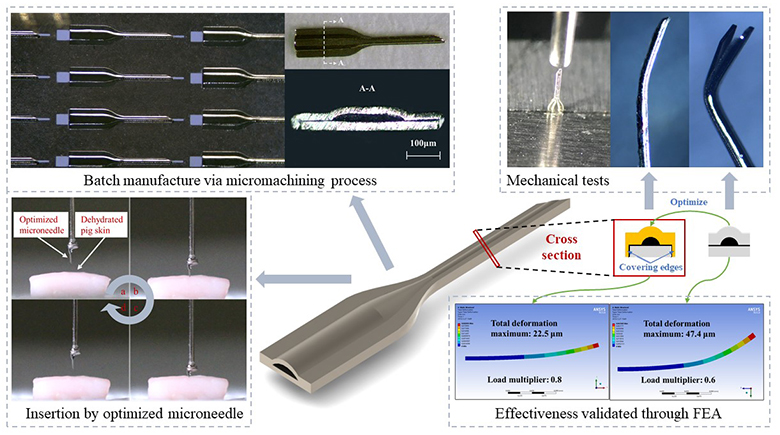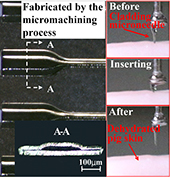
Institution: National Key Laboratory of Micro/Nano Fabrication Technology, School of Electronic Information and Electrical Engineering, Shanghai Jiao Tong University, 800 Dongchuan RD. Minhang District, Shanghai 200240, China
Description: With the development of micromachining technology, microneedles have been developed by academic laboratories and pharmaceutical companies as a kind of prospective miniaturized analytical or therapeutic components. Microneedles are generally utilized to enhance transdermal delivery of drug molecules, which is a promising choice for patients because this method is minimally invasive and prevents excite pain-sensitive nerves. Additionally, patients can use microneedles to administrate drugs on their own. Recently, researchers have tried to integrate microneedles into more complicated biological detection / delivery systems for point-of-care (POC) diagnosis or therapy. Therefore, higher requirements are put forward for microneedles. Previously, we reported a novel hollow in-plane microneedle consisting of a stack structure. It has been proved feasible to serve minimally invasive micro-sampling / injection with the microneedle. However, the tips of microneedles tended to break at the bonding interface between the two layers in the mechanical tests, which brings concerns on their security and reliability. In this study, an optimized cladding microneedle is designed to improve mechanical strength. The effectiveness has been validated through finite element analysis (FEA). The prototypes of the microneedles were successfully batch manufactured by the micromachining process with no need to assemble. The microneedle performs very well in a series of mechanical tests. Compared to our previously reported microneedle with the weak stack structure, the cladding microneedle in this work shows 263% improvement in bonding strength (6.4±0.3 N) and 36.5% improvement in buckling strength (2.8±0.07 N). In addition, the fabricated microneedle will not fail during insertion into the fresh and dehydrated pig skin with a satisfying safety factor (1.55), showing great prospect in practical applications.

